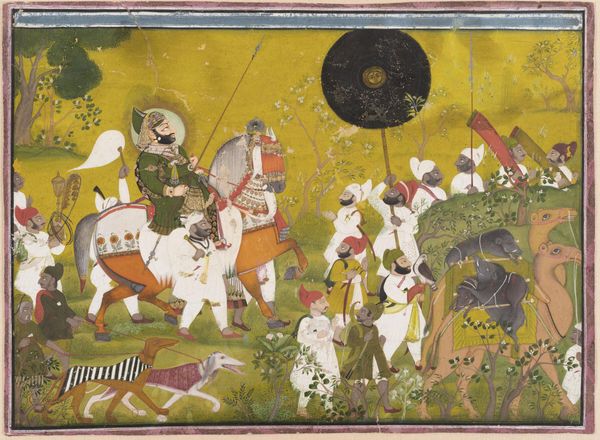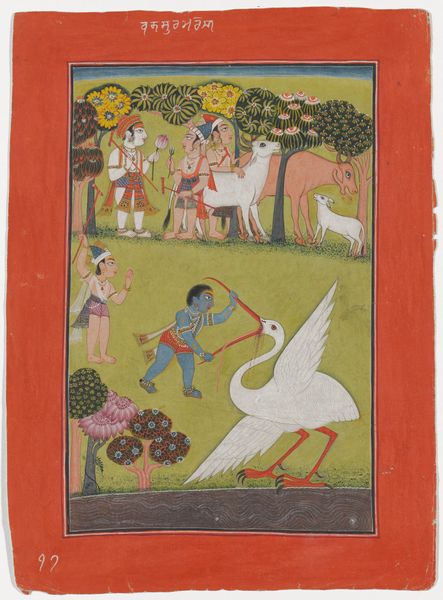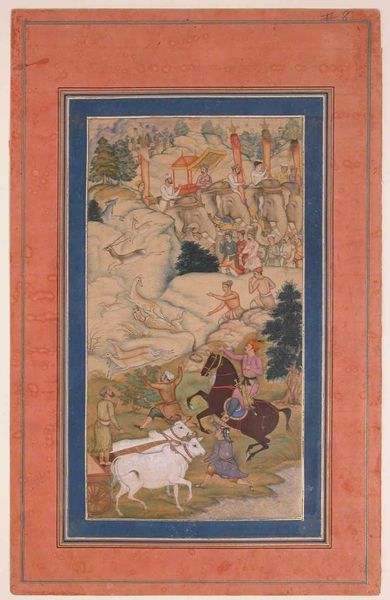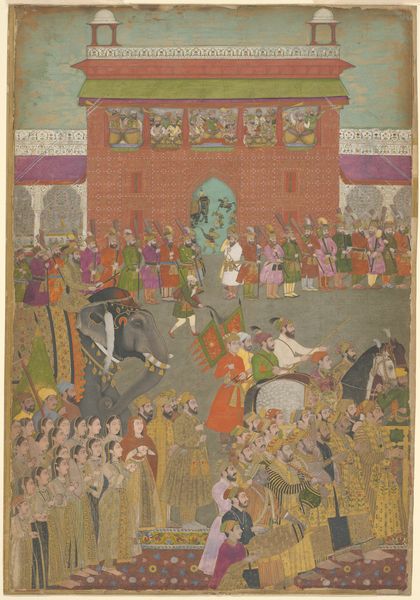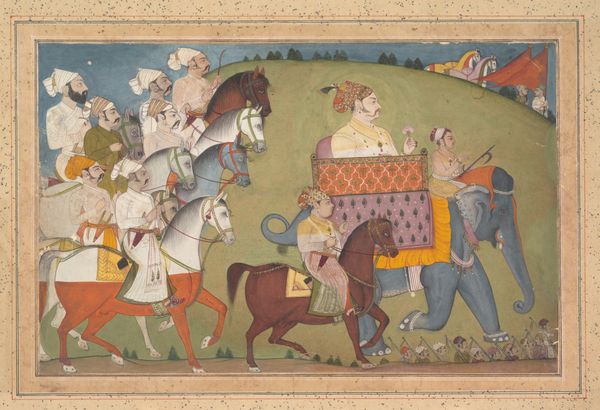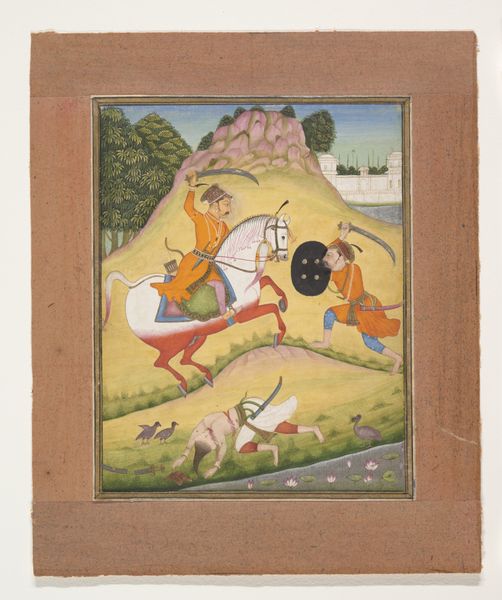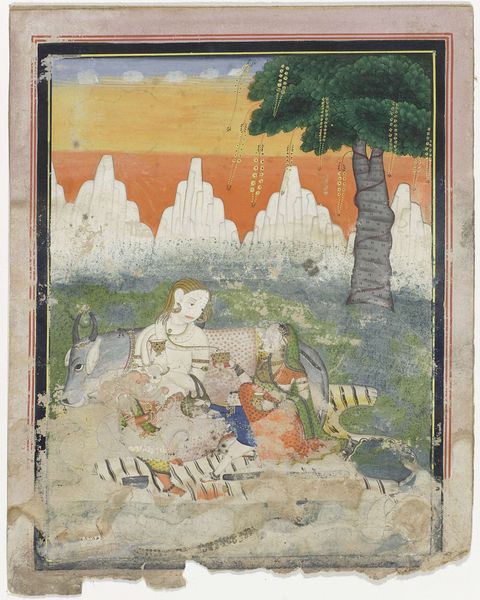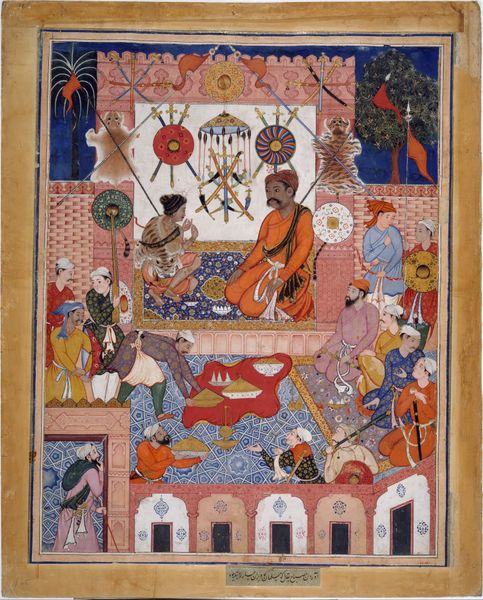
collage, tempera, painting, paper, ink
#
portrait
#
weapon
#
collage
#
animal
#
tempera
#
painting
#
asian-art
#
paper
#
ink
#
jewelry
#
horse
#
men
#
genre-painting
#
history-painting
#
sword
#
miniature
Dimensions: Image: 57.1 × 41.6 cm (22 1/2 × 16 3/8 in.); Paper: 60.7 × 45.6 cm (23 7/8 × 18 in.)
Copyright: Public Domain
Editor: Here we have "Maharana Bhim Singh in Procession," made around 1820. It's attributed to Ghasi, employing tempera, ink, and paper. What strikes me is how vibrant and flat everything appears simultaneously, especially with that expanse of green! What compositional elements stand out to you? Curator: Indeed. Note the deployment of color. The stark white of the horses and attendants' garments creates a striking contrast against the green ground. Observe, too, the spatial arrangement; the procession unfolds in a rather compressed plane, eschewing traditional perspective in favor of a flattened hierarchy of figures and objects. Editor: Hierarchy? Do you mean by size or placement? Curator: Primarily placement. Consider how the Maharana and his horse occupy the visual apex. Their scale isn't dramatically larger, but their position directs the eye. Furthermore, note how each figure is rendered with meticulous detail, yet lacks a certain depth. They are presented almost as stylized forms. Editor: So it's less about realism and more about symbolic representation? Curator: Precisely. This pictorial language prioritizes symbolic meaning over representational accuracy. The emphasis shifts to form, color, and arrangement. For example, consider the use of repeated shapes and colors to create rhythm throughout the composition. It is through this rhythm that unity emerges from complexity. Editor: That's fascinating. I see how the repetition of the orange turbans creates a visual echo. Are the clouds at the top related or some other visual device? Curator: Yes, a close observation reveals that this pattern creates balance within the overall design. The clouds mirror and offset some of the more solid or geometric elements on the other parts of the painting. In what manner could this balance affect the mood or subject matter? Editor: This has completely shifted my perception. Initially, I saw just a flat, decorative scene, but now I recognize the strategic use of color, shape, and spatial arrangement to emphasize both the Maharana's importance and create artistic unity. Curator: Excellent, understanding the relationships of form to content opens many new doors in appreciation and awareness.
Comments
No comments
Be the first to comment and join the conversation on the ultimate creative platform.


